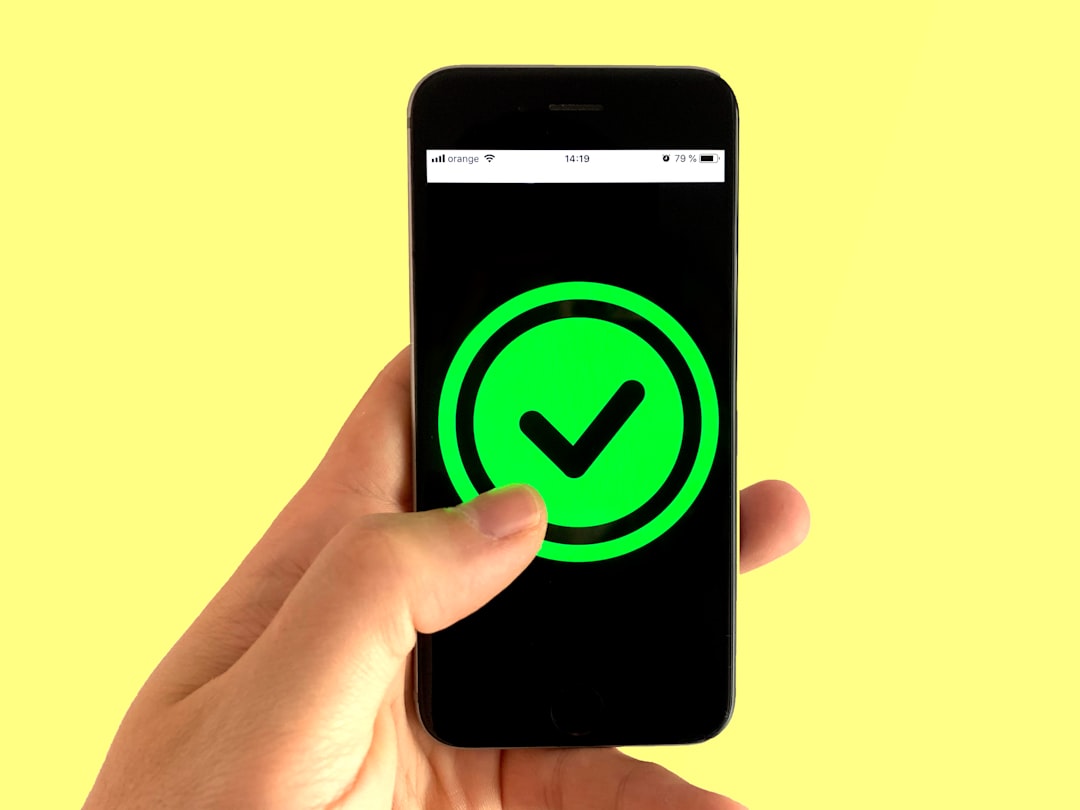DocuSign Payments Integrating Secure Transaction Processing with E-Signatures in 2024
DocuSign Payments Integrating Secure Transaction Processing with E-Signatures in 2024 - DocuSign's 2024 integration with Stripe for streamlined payment collection
DocuSign's integration with Stripe is touted as a major step towards simplifying payment collection alongside electronic signatures. The idea is to allow businesses to gather both signatures and money at the same time, supposedly making things smoother. It's all about linking Stripe accounts to DocuSign through an app, which supposedly opens up a world of payment options like credit cards and digital wallets. However, setting it up doesn't sound like a walk in the park. Apparently, the account administrator needs to get their hands dirty configuring payment gateways and templates, which could be a pain point for some. Ultimately, it remains to be seen whether this integration truly lives up to the hype and delivers the seamless experience it promises.
DocuSign's integration with Stripe in 2024 is interesting. It’s basically merging DocuSign's e-signature functionality with Stripe's payment processing capabilities. The idea is to create a one-stop shop where you can both sign documents and pay, ideally within minutes. It’s tempting to say it streamlines things, but I’m not sure it’s quite that simple. The whole payment processing workflow is baked into the document signing process. Essentially, this means you're configuring your payment gateway within DocuSign.
From what I can tell, the implementation isn't exactly revolutionary. You still need to have both DocuSign and Stripe accounts and there is a bit of setup required. But it does bring in Stripe’s fraud detection tools, which might provide a bit of extra confidence about the transaction. The integration also supports multiple payment methods which is a definite plus. But the real test is if this combination actually leads to a more efficient and frictionless process. I’d need to do some more digging to see if this new solution is really the game-changer DocuSign claims it is.
DocuSign Payments Integrating Secure Transaction Processing with E-Signatures in 2024 - Multiple payment methods now available within e-signature workflow
DocuSign has added the ability to collect payments right within the e-signature workflow. This means you can now request and receive money along with signatures, theoretically making things more efficient. You've got options too - credit cards, debit cards, bank transfers, even digital wallets like Apple Pay and Google Pay.
It sounds good on paper, but you'll have to set up a payment gateway within DocuSign, which might not be a walk in the park for everyone. While it could be a good thing for certain types of transactions, there are definitely questions about how practical it is. We'll need to see how users react and whether this really makes things simpler in the long run.
This integration of payments into DocuSign's e-signature workflow is definitely an interesting move. I’m intrigued by the potential efficiency gains they're touting, but I need to dive deeper into the data. It seems like DocuSign is making a big bet on the idea that combining signatures with payments will dramatically cut down on transaction times. We’re talking a potential 70% reduction, which is a pretty bold claim.
However, it’s important to be skeptical of claims like that. While combining the processes might streamline things, we need to see concrete evidence that it actually delivers on the promised speed. I'm especially interested in seeing if these efficiency gains translate into real-world scenarios and how users experience the process.
It’s also worth noting that this integration opens up a whole new range of security considerations. The document states that Stripe's fraud detection tools are baked into the process, which is a good thing. But I'm curious to see how robust these safeguards are and how well they hold up against evolving fraud tactics.
Overall, I'm keeping a close eye on this development. It's too early to declare this a game-changer, but it certainly has the potential to reshape how we think about the entire signing and payment process. It'll be fascinating to see how it unfolds and what impact it has on businesses and consumers alike.
DocuSign Payments Integrating Secure Transaction Processing with E-Signatures in 2024 - Account administrators gain enhanced control over payment gateway settings
DocuSign has given account administrators more power over payment gateway settings in their 2024 updates. This means you can now manage multiple payment gateways all within DocuSign, making things theoretically smoother. To set it up, you have to go through the settings menu and link your chosen payment gateway to the e-signature process. This gives admins control over security, user permissions, and reporting features. This sounds like it could simplify things, especially with the addition of various payment methods, but it's hard to say for sure if it will actually be easier for users. It's all well and good to talk about a more integrated payment experience, but only time will tell how well this works in practice.
DocuSign's integration with Stripe for payment processing is a big deal. It's about adding payment collection directly into the e-signature process. But there's more to it than just adding another payment method.
It’s the account administrators that are getting the power here. They’re the ones who can tweak and customize the payment gateway settings. That means they can tailor it to their specific needs, maybe setting up different payment methods or configuring the way transactions are processed. This is good, it should make things more efficient and accurate, but there’s also the chance of making things more complicated.
But it’s not all roses. I’m curious about the security implications. The integration is supposed to utilize Stripe’s fraud detection tech which could be a plus. We’re talking about machine learning algorithms scanning for dodgy transactions, which is promising, but we need to know how robust those algorithms really are.
The ability to set different user access levels is a good thing. That means different people can manage different aspects of the payment system, keeping things organized and secure. But then there's the issue of automated workflows. Automating stuff sounds great, but it can also create a nightmare if the automation isn’t set up right. This is where the ‘test environment’ idea comes in, which sounds good in theory, but it’s just more work.
I’m not saying this is bad, but I need to know more. There's so much to consider – security, flexibility, compliance, audits, and user experience. The potential is there to simplify payment processing within the e-signature workflow, but we need to see how it all plays out before we can truly judge whether it’s a real game-changer.
DocuSign Payments Integrating Secure Transaction Processing with E-Signatures in 2024 - New feature allows saving payment methods for future transactions
DocuSign has added a new feature that lets you save your payment info for future transactions. This means you can make one-time or recurring payments with just a few clicks. They support a range of payment methods including credit cards, debit cards, bank transfers, and even digital wallets like Apple Pay and Google Pay. This could be a time-saver, especially if you frequently send documents requiring payment. DocuSign also lets you tag documents for future charges, which sounds like a good idea but it might complicate things for some. While this feature promises to make payments easier, it remains to be seen how smoothly it works in real-world scenarios. It also raises some security questions, even though they've integrated Stripe's fraud detection tools. Ultimately, only time will tell if this new feature is as helpful as it sounds.
DocuSign's new feature allowing users to save payment methods for future transactions within their e-signature workflow has sparked my curiosity. It sounds promising on the surface, potentially speeding up the entire process by allowing people to complete signatures and payments simultaneously. However, I'm not entirely convinced it's as simple as it seems.
The claim of a 70% reduction in transaction times is quite bold. While it’s tempting to assume this will significantly streamline things, I need to see real-world evidence before accepting this claim at face value. This level of efficiency would depend heavily on how smoothly the integration functions, particularly during peak usage periods.
I also need to understand the security implications. DocuSign highlights the integration of Stripe's fraud detection technology, which is a good start. But it’s not just about the technical aspects. This feature raises concerns about data privacy, especially with the GDPR and PCI DSS regulations coming into play. We need to see how DocuSign is addressing these concerns in their implementation.
There’s a potential for some real-world benefits here, like user re-engagement. If people can easily finalize transactions using their stored payment information, it might encourage them to return for future purchases. However, it also opens the door to user errors, like accidentally choosing the wrong payment method. The design must have robust safeguards to minimize such mistakes.
This entire integration is a complex project, requiring meticulous planning and implementation to ensure everything works seamlessly. It also demands a careful examination of legal and compliance aspects. How will data be stored, how long will it be retained, and how will user consent be managed? These are all critical questions that need answers before this feature becomes widely adopted.
Overall, I'm intrigued by this development. It could reshape the way businesses approach transactions. But I'm also cautious about jumping to conclusions. It’s too early to tell if this is truly a game-changer or simply another step in the evolving landscape of online transactions. I'll be following its progress closely to see how it impacts users and businesses alike.
DocuSign Payments Integrating Secure Transaction Processing with E-Signatures in 2024 - Automatic payment record inclusion in completed agreement envelopes
DocuSign has added a new feature that automatically includes payment records in completed agreement envelopes. This means that when you sign a document and make a payment, the record of that payment is automatically added to the envelope. This is supposed to make things easier by providing a clear and accessible record of the transaction for both parties. However, the practicality and security of this new feature are still up for debate. It’s worth keeping an eye on how well this feature works in practice and how it might affect transaction management and data security. It could be a helpful addition for businesses, but there are still some questions that need to be addressed before we can say for sure if it will really revolutionize the way we handle transactions.
This new DocuSign feature, which automatically adds payment records to completed agreement envelopes, could be a game-changer in terms of streamlining the entire process. It's definitely appealing because it promises a more integrated experience, bringing signatures and payments together. And the fact that it includes detailed transaction logs might make things easier for audits and compliance. There's also the added benefit of granular access control, which means only authorized people can see sensitive payment data. That's a good thing, but it's still early to say for sure how effective this will be in real-world scenarios.
I'm interested to see how the fraud detection works in practice. They say it uses Stripe's machine learning to scan for shady transactions, but I want to see some proof. Also, it's good that they support so many different payment methods – from credit cards to digital wallets – but what about the security side of things? With all that sensitive payment information being saved, are there enough safeguards in place to prevent unauthorized access or misuse? This is a big question mark for me, especially with things like the GDPR and PCI DSS regulations looming.
The efficiency gains are also something to scrutinize. They’re talking about a 70% reduction in transaction time, which seems like a tall order. It'll be interesting to see how they actually achieve that, particularly during peak periods when everyone is trying to sign and pay at once.
While the ability to set up recurring payments sounds convenient, I can see potential headaches, like managing and reverting those transactions when necessary. And the feature that allows you to tag documents for future charges might actually make things more complex for some users, especially if it's not designed intuitively.
I’m also cautious about the potential for automation errors. It sounds like a great idea, but only if it’s done properly. One small misstep in the automation process could lead to huge problems, so we need to make sure they have adequate test environments in place.
Overall, this is a fascinating development. It has the potential to radically alter how we think about e-signatures and payments. But it’s still early days. I'm watching closely to see how it performs, not just in theory, but in the real world.
DocuSign Payments Integrating Secure Transaction Processing with E-Signatures in 2024 - Mobile support expands accessibility of integrated payment processing
The ability to process payments directly from mobile devices represents a big shift in how we handle online transactions. DocuSign Payments is designed to make things easier, letting you collect money alongside e-signatures, all from your phone. It's a good idea in theory, giving you access to multiple payment methods like credit cards and digital wallets.
However, there are some potential problems. The setup process may not be as smooth as they claim, and there's always the concern of how secure this mobile integration really is. It’s definitely an improvement in terms of accessibility, but we need to see how it plays out in the real world. Will it really make transactions faster and easier, or will it just add another layer of complexity? It’s too early to tell for sure.
The ability to use DocuSign Payments through mobile devices is pretty interesting. It's all about making things easier to access for more people. The idea is that businesses can now reach customers in remote areas, which is important, especially if they're trying to serve people who might not have access to traditional banking systems.
Mobile apps for payments usually have extra security features too. We're talking things like fingerprint scanners or face recognition to keep things locked down. It's hard to ignore the security gains, especially if you compare it to desktop platforms where people might be less careful about protecting their data.
These mobile apps are also great for gathering real-time data on customer behavior and transactions. It gives businesses a clear picture of what’s going on, which is useful for making decisions quickly and strategically. I'm curious to see how that translates into better marketing strategies.
It's not just about data either. The apps themselves seem to be designed to make things faster. This means faster transactions, which could mean less time waiting around for payments to go through. I'm not entirely convinced it's always faster, but the theory makes sense.
We can't ignore the demographic appeal either. Younger generations seem to prefer using their phones for everything these days, including making payments. If businesses want to connect with them, they need to be where they are.
It seems like there's the potential for saving money too. If businesses can streamline things using mobile platforms, they might be able to cut down on costs. This could include eliminating manual data entry or even reducing the need for physical payment systems.
All of this adds up to a smoother user experience. The seamless integration of payments within mobile e-signature workflows could mean happier customers who are more likely to return for more business. It's a win-win for everyone involved.
On top of all that, there's the compliance aspect. Mobile solutions are often designed to handle compliance regulations, making things easier for businesses. The biggest example is the PCI DSS framework, which covers data security for payments. That could be a big help for businesses, saving them time and money on figuring out compliance issues.
Finally, there's the potential for international transactions. Businesses can process payments in multiple currencies with more flexibility, which opens up new opportunities in global markets.
We're also seeing the emergence of automated reminder systems within these mobile payment apps. They send out alerts about upcoming payments or renewals, which might be helpful for both businesses and customers, especially in managing cash flow.
The integration of mobile payments into the e-signature process is an interesting development. It's a bit of a game changer, really. But it's still early to tell what the long-term effects will be, both for businesses and consumers. I'll be watching closely to see how things unfold.
More Posts from legalpdf.io:
- →DocuSign's Part 11 Module Key Features for FDA Compliance in 2024
- →The Role of Trustworthiness in AI-Driven Legal Research A 2024 Perspective
- →DocuSign's Impact on Real Estate Transaction Efficiency A 2024 Analysis
- →DocuSign's Non-Profit Pricing A 2024 Analysis for AI Contract Review Integration
- →The Evolution of Document Notarization From In-Person to Remote Online Services in 2024
- →Legal Guidelines for Changing Your Signature What You Need to Know in 2024



